How To Propagate A Jade Plant In Water (Root & Grow)
To propagate a jade plant in water, use a healthy stem or leaf cutting taken down with a sharp garden scissors. Put it in a glass of clean water in a sunny spot. Use of rooting hormone is optional but advantageous.
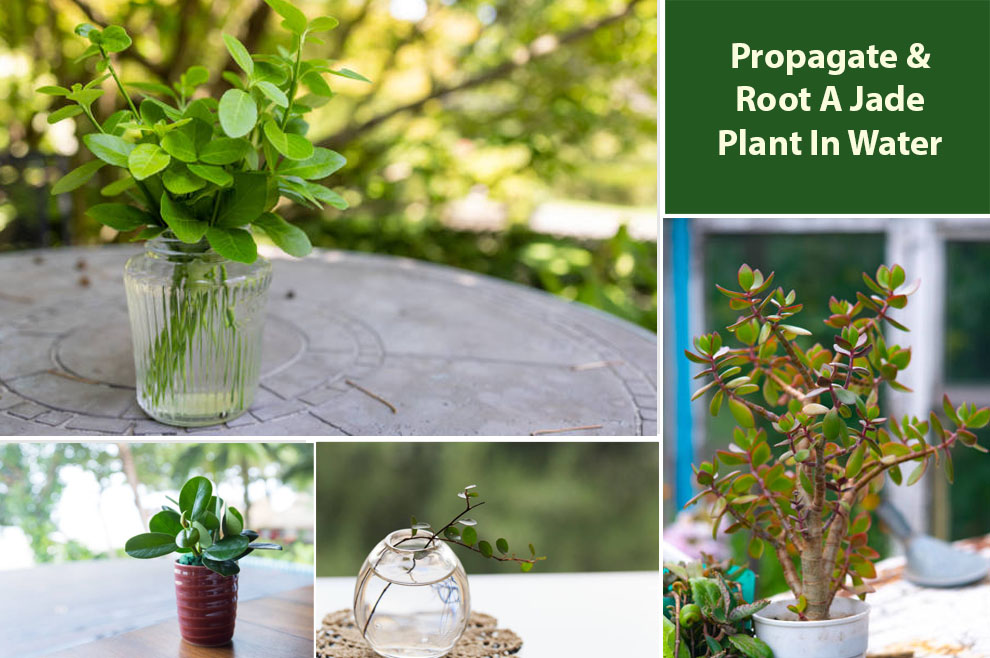
Jade plants are succulents that are extremely popular as houseplants and feature thick, glossy, round leaves that are often variegated in shades of green, yellow, and red.
These are special plants that can be propagated in water with a bit of care. In order to understand how to propagate a Jade plant in water, start by taking a healthy stem cutting from an existing jade plant, and removing the leaves from the lower half of the stem.
Place the cutting in a glass of water and make sure that the water covers the bottom node (where the leaves were removed). Place the glass in a sunny spot and change the water every few days.
After a few weeks, you will see roots forming. Once the roots are a few inches long, transplant the cutting into a pot with well-draining soil and continue to water regularly.
So, that’s the gist of it. But wait! There’s more to it. Let us explore in detail how a Jade plant can be propagated in water and the conditions necessary for it.
How To Root Jade Plants In Water?
If you wish to root a Jade plant in water, begin by taking a cutting of at least 4 inches in length from a matured plant that has some leaves on it. Make sure to use sharp garden scissors or knives to do so.
Remove the lowest leaves from the cutting and soak them in a rooting hormone mix. Put the cutting in a glass or jar of water, with the leaves above the water line. To keep the water from becoming stagnant, change it every few days.
Place the container in a bright, indirect light for a few weeks, and you should notice roots forming. When the roots are about an inch long, transfer the cutting into a soil-filled pot and care for it as usual.
So, there are two major techniques used to root a Jade plant in water: stem cuttings and leaf cuttings.
Apart from these two, air layering is another technique that is sometimes used to root a Jade plant in water. It involves slightly wounding a stem and then wrapping it in a moist medium like damp sphagnum moss and then placing it in water.
A. With stem cutting
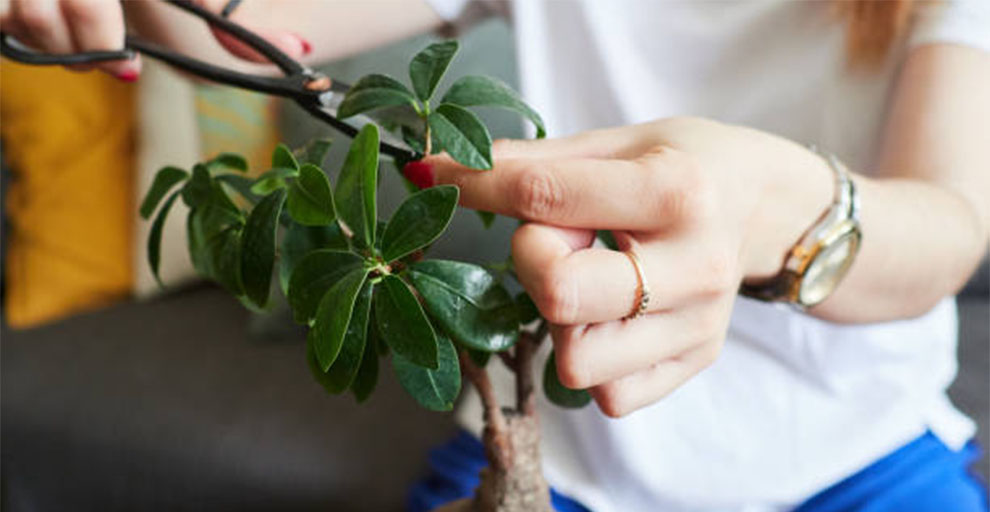
Stem cuttings involve cutting a healthy stem from the mother plant and placing the cut end in water. The steps for this method are:
- Start by selecting a healthy stem for the cutting. Cut the stem just below a node (a place where leaves are attached to the stem) using sharp, clean scissors. Make sure to cut at a 45-degree angle.
- Dip the cut end into a rooting hormone powder.
- Fill a glass or jar with water, and place the stem into it. Make sure the node is submerged in the water.
- Place the jar in a spot that gets plenty of indirect sunlight, such as near a window.
- Change the water every 2-3 days to keep it fresh.
- In a few weeks, you should start to see small white roots emerging from the node. Once the roots have grown 1-2 inches long, they’re ready to be planted in soil.
- Fill a pot with well-draining soil, such as a cactus mix, and plant the cutting. Water it thoroughly once it’s planted.
- Continue to water the cutting regularly and place it in a spot that gets plenty of sunlight.
B. Through leaves
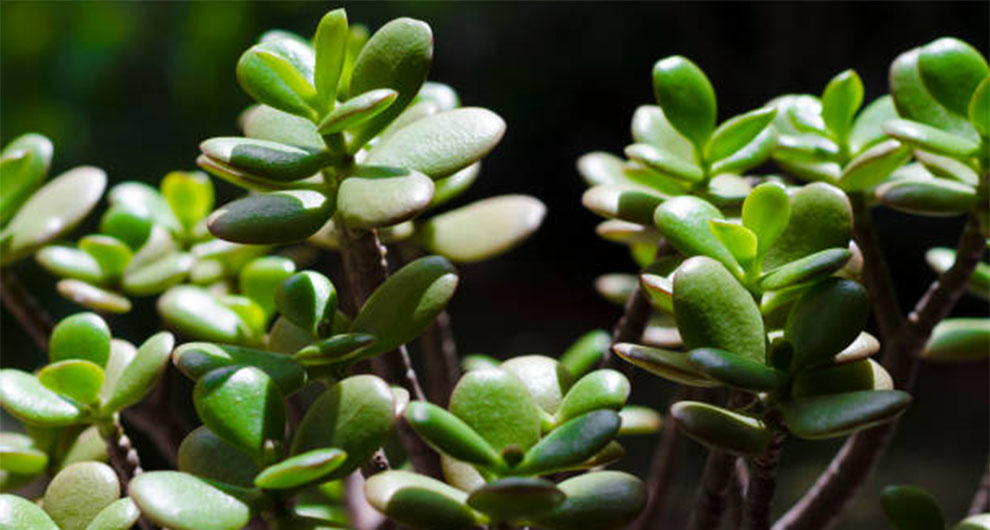
Leaf cuttings involve taking a healthy leaf from the mother plant and submerging the stem in water. The steps involved in this method are:
- Choose a healthy leaf from the jade plant.
- Use a sharp, sterile knife to cut off the leaf at the base of the stem.
- Place the cutting in a jar of water, making sure that the cutting is completely submerged.
- Place the jar in a warm, bright location and wait for the cutting to develop roots.
- Change the water every 2-3 days and add a few drops of liquid fertilizer for jade to the water.
- After about two weeks, the cutting should have developed roots.
- Next is planting the cutting in a potting soil mix and watering it regularly.
- Place the pot in a warm, bright location and wait for the cutting to develop new leaves.
What Are Some Of The Other Requirements Of The Jade Plant When Propagated In Water?
For readers who are learning how to grow Jade plants in water, it is important to be aware of the preferred environmental conditions of the plant.
Light – A south or west-facing window is ideal for growing young Jade plants because those directions receive filtered or partial sunlight throughout the day.
In indirect sunshine, jade plants thrive. Make sure to provide your growing Jade plant with three to four hours of filtered sunlight daily.
Temperature – Water-grown Jade species grow most effectively in temperatures ranging from 65° to 80°F (18 to 27°C) during the day. During the night, the Jade plant prefers a somewhat colder temperature of 55° F or 13° C.
You must be careful not to expose the plant to temperatures below 40°Fahrenheit (5°Celsius) for an extended period as the Jade plant cannot tolerate such low temperatures.
Quality of Water – It is highly recommended to use filtered rainwater or purified water to propagate Jade plants in water. On the off-chance that you are using tap water, make sure it is of the quality that is suitable for drinking. Let the tap water sit in a container overnight before immersing the plant in it.
When growing a Jade plant in water, it is critical to keep an eye on the water quality or the health of the plant can suffer greatly.
Is The Rooting Hormone Always Needed To Propagate Jade In Water?
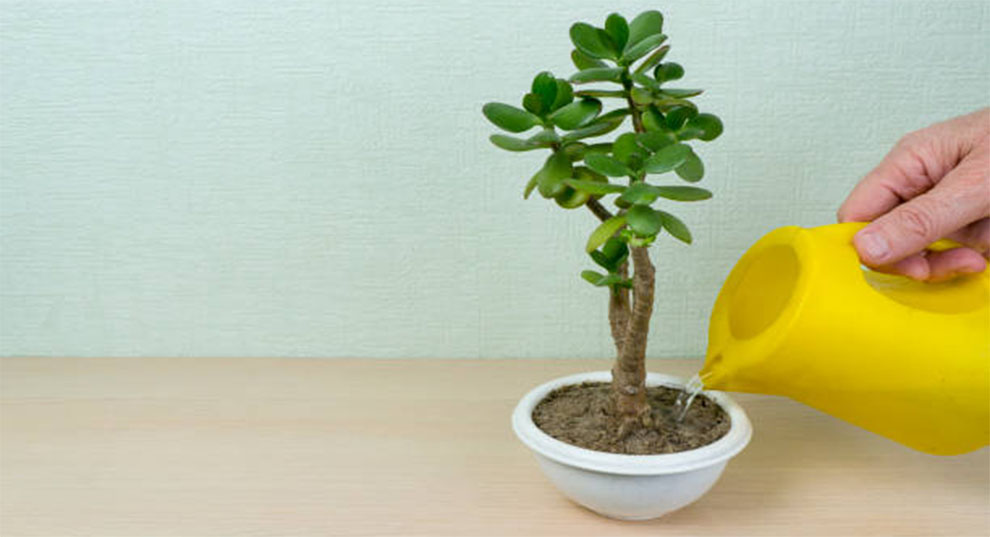
Rooting hormone is not absolutely necessary to propagate Jade plants in water. Jade plants are succulents, and their stems can root easily in water without the help of rooting hormones.
Rooting hormones are often used to encourage faster and stronger root growth, however, it is not mandatory for the successful propagation of Jade plants.
Even though rooting hormones might not be absolutely essential for the growth and development of Jade plants, they help promote root growth in Jade plants, encouraging them to take root when propagated through stem cuttings.
They can also help to reduce the amount of time it takes for a Jade plant to produce new roots.
When Is The Best Time To Propagate Jade Plants?
Now that you know how to propagate a Jade plant in water, you now need to learn about the ideal time to propagate Jade plants.
The best time to propagate Jade plants in water is late spring or early summer. This is when the plant has the most energy available for producing healthy roots.
Additionally, temperatures are warmer during this time, which can help ensure the success of the propagation.
How Long Does Jade Take To Root In Water?
Jade plants typically take between 2 and 4 weeks to root in water. The exact time will depend on the particular variety of Jade plants and the specific growing conditions.
After the piece of stem cutting from a Jade plant has been put in a jar of water and the jar has been placed in a warm, sunny spot, the roots should start to form within a few weeks.
It can take up to 4 weeks for the roots to become fully established. Once the roots are visible, wait until they are at least an inch long before transplanting the cutting into the soil.
With proper Jade care, your Jade plant should be happily established within the next few weeks.
Where To Cut Jade Plants For Propagation?
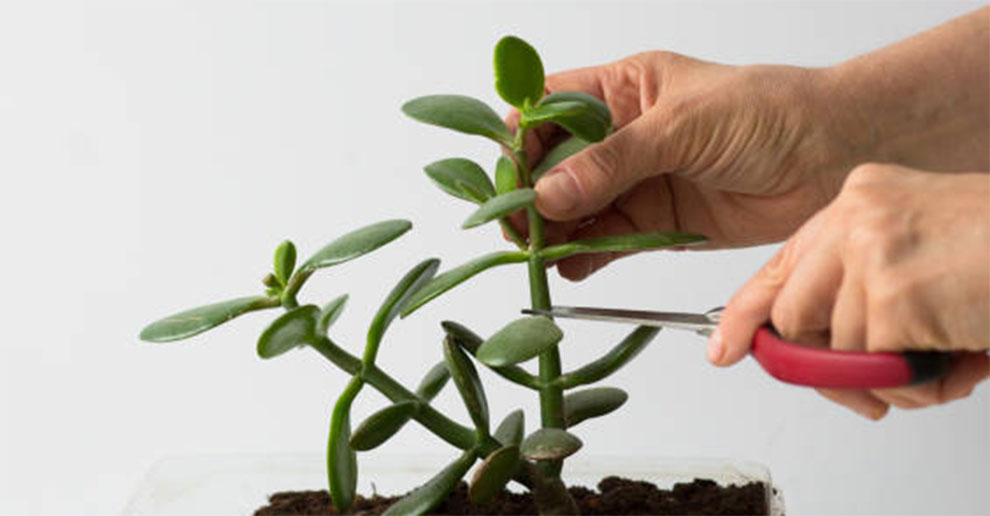
For successful propagation of the Jade plant in water by stem cutting method, start by cutting a healthy stem from your Jade plant. Make sure the stem is at least four inches long and has at least two or three sets of leaves.
The blade used to make the cut should be very sharp and clean. Then cut the stem just below the node (the place where a leaf is attached to the stem). This is where the new roots will grow from.
For the leaf-cutting technique, first, select a healthy leaf from a fully grown jade plant. Use a sharp and clean knife or pair of scissors to cut the leaf from the stem. Now submerge the cut end of the leaf in a cup of water.
Related: Jade leaves turning yellow | Jade lifespan | Jade plant winter care
Common Doubts About How To Propagate Jade Plant Leaves In Water
Q. Is it better to propagate a jade plant in water or soil?
Ans: It is generally better to propagate a Jade plant in soil rather than water. This is because propagating them in soil ensures that the plant will have access to the nutrients it needs to thrive.
Additionally, propagating in the soil allows for greater control over watering and temperature, which can be difficult to manage in water.
Propagating a Jade plant in water can be difficult due to the plant’s sensitivity to temperature and water quality.
Additionally, keeping the water clean can be a challenge, as the plant’s roots can easily become clogged with debris. This can cause root rot, which can quickly kill the propagated plant.
Q. Why a Jade plant may not be rooting?
Ans: A Jade plant may not be rooting due to a variety of reasons like too much or too little water, exposing the plant to direct sunlight, root rot due to waterlogging in the roots, and lack or excess humidity.
It can also happen when an initial cut made on the stem doesn’t fully heal before moving on to the next step of propagation.
Q. Can the jade plant grow in water after propagation?
Ans: No, jade plants cannot grow in water after they are propagated. They need to be planted in soil in order to grow.
Q. What are the other methods of propagating jade?
Ans: Apart from water, a jade plant is commonly propagated in soil using stem cuttings, leaf cuttings, layering, and division.
To Sum Up…
So, with the correct method of propagating a Jade plant in water along with the ideal environmental conditions, you won’t have much difficulty in growing a fresh Jade plant.
There are two ways to do it – through stem and leaf-cutting. If you are about to propagate a Jade plant in water, we hope this article comes in handy!
